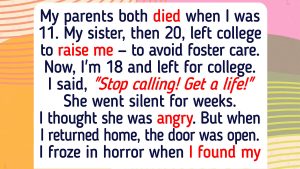
“When I’m Sixty-Four”—Learn a Fun, Hybrid-Picked Arrangement of This Time-Honored Beatles Tune
Paul McCartney was only 16 when he wrote the tune to “When I’m Sixty-Four,” and still a young lad of 24 when he finished the song with the Beatles in 1966 for Sgt. Pepper’s Lonely Hearts Club Band. Nearly 60 years later, with McCartney long past the song’s age marker, “When I’m Sixty-Four” sounds as fun and fresh as ever. And though there’s almost no guitar on the Beatles track except for a few touches of John Lennon’s electric in the last verse, “When I’m Sixty-Four” makes a great guitar song—whether played with a pick, fingers, or hybrid style, as I do in this arrangement.
The most prominent instruments on the Sgt. Pepper’s track are woodwinds—two B♭ clarinets and a bass clarinet, which producer George Martin helped arrange—along with piano, bass, and drums. The song was recorded in the key of C but sped up for the album to make it “sound more rooty-tooty,” as McCartney put it in Barry Miles’ biography Many Years from Now. This arrangement uses the original key of C; to play along with the album key of C♯, place a capo on the first fret.
The core rhythm here is a swing-style alternating bass/strum, as in measure 5 of the notation, with staccato chords that you can play as mostly string percussion with minimal pitch. In the song’s refrain (“Will you still need me…”), I switch to punchy quarter-note strums.
The Beatles track has lots of nice little melodic bits, especially on clarinet, that I wanted to include on guitar, and that’s where the hybrid picking comes in. In the intro (which also serves as the outro), play the up-stemmed melody with your fingers and down-stemmed bass notes with the pick—or just use your fingers if you prefer. The G walk-up, shown in measures 6–7, punctuates the fourth line of the verse and leads to a stop on C.
In bridge 1, McCartney doesn’t sing on the first four bars—the clarinets add a melody instead. I play the clarinet melody atop the chords in this section, as shown in measures 8–11. In the second bridge, because there is a vocal line, I just play a bass/strum pattern. The chord melody continues in the bridge through measure 15; the melodic riff over the E chord comes from the background vocals.
The original “When I’m Sixty-Four” has no instrumental break, but it’s fun to take a pass through the verse playing the melody with touches of the chords. I play the solo shown in the notation with pick only, mainly because I can give it more rhythmic drive that way, but it also works nicely played hybrid or fingerstyle. Playing the melody requires a few new chord shapes (not included in the chord library) in measures 37–39, such as a D9 and G6.
I’ve performed this song a bunch as a duet with Wendy Sassafras Ramsay on clarinet, and it never fails to make audiences smile. This young man’s tongue-in-cheek imagining of old age somehow never gets old.
Due to copyright restrictions, we are unable to post notation or tablature for this musical work. If you have a digital or physical copy of the September-October 2025 issue of Acoustic Guitar magazine, you will find the music on page 51.
Jeffrey Pepper RodgersJeffrey Pepper Rodgers, founding editor of Acoustic Guitar, is a grand prize winner of the John Lennon Songwriting Contest and author of The Complete Singer-Songwriter, Beyond Strumming, and other books and videos for musicians. In addition to his ongoing work with AG, he offers live workshops for guitarists and songwriters, plus video lessons, song charts, and tab, on Patreon.











